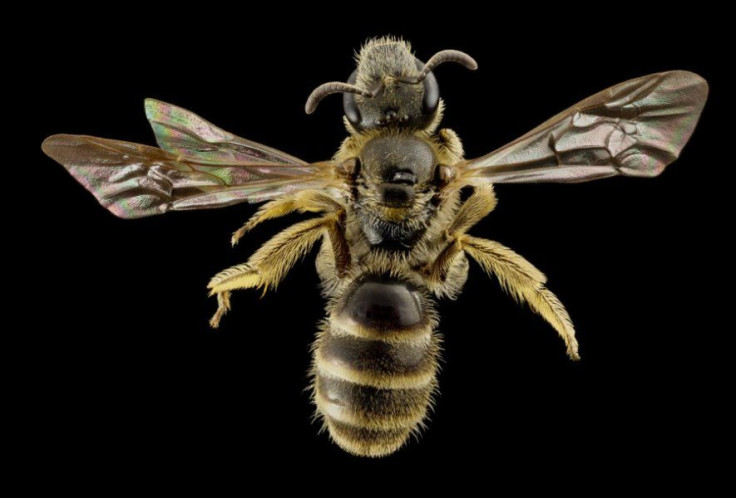Lonely Bees Can’t Communicate As Well As Social Ones, Scientists Say

A bee’s antennae is only as good as the friends it has, scientists are suggesting, based on a study into the sensory capabilities of those organs as compared to how social the attached bees are.
The researchers focused specifically on a certain kind of bee family called halictid bees, which are also known as sweat bees. There are many different species of halictid bees that vary in how social or solitary they are. The team examined bees from 36 different species within that family to find that the more social the bee species was, the more sensory hairs they had on their antennae, according to the study in the journal Proceedings of the National Academy of Sciences.
Read: This Insect Looks Like A T. Rex But Is Actually A Terrified Cannibal
“Because social living requires the coordination of complex social behaviors, social insects invest more in these sensory systems — used to communicate information about resources, mates and sources of danger to their colonies and, therefore, are integral to survival — than their solitary counterparts,” Princeton University explained in a statement.
And the more social they become, the more evolutionary and biological energy they must invest in their sensory organs: “As social complexity increases, so does the requirement for a greater diversity of signals,” the study says.
To show this relationship in the halictid bees, the scientists took images of adult female antennae to learn more about their topography and composition. They observed changes in both the antenna structure and the chemical signals of the bees that correlated with whether the bees were of a social variety or more of a loner type.
With the antennae, the social bees tended to have a greater density of sensilla, the tiny hairs on their antennae that do the heavy lifting in communicating with others.
Some species of halictid bees have evolved to become more social or less social over time. The researchers observed that bees that had previously been more social but were now more solitary had reduced numbers of sensilla, suggesting that because their behaviors required less sensory energy to be expended, their physical bodies responded by making their antennae less complex.
“Our results suggest that social species require a greater investment in communication than their solitary counterparts,” the study says, “and that species that have reverted from eusociality to solitary living have … reduced investment in these potentially costly sensory perception systems.”
The halictid bees made for a solid target because they are “one of the most behaviorally diverse social insects on the planet,” Princeton said. The university’s researcher Sarah Kocher, a corresponding author on the study, explained, “What we have is a system with tremendous comparative power.”
Read: Here’s What Passed for Insect Romance In Prehistoric Times
On the more socially extreme end of the spectrum, called eusocial, the bees throw their efforts into the colony, comprising some of their capacity to create offspring in order to perform community behaviors like tending to young and getting food. But there are also bees on the other end that behave more like lone wolves.
Halictid bees may be important to evolutionary science but they are also important to the environment because of their pollination services, according to the U.S. Department of Agriculture’s Forest Service. They are, however, indiscriminate pollinators — they will visit a large variety of flowers in a single trip, which means pollen from one flower may not be deposited on another of the same kind, which is the whole point of pollination. The bees also have to be equipped to extract and tolerate more types of flower pollen and nectar.
© Copyright IBTimes 2025. All rights reserved.





















